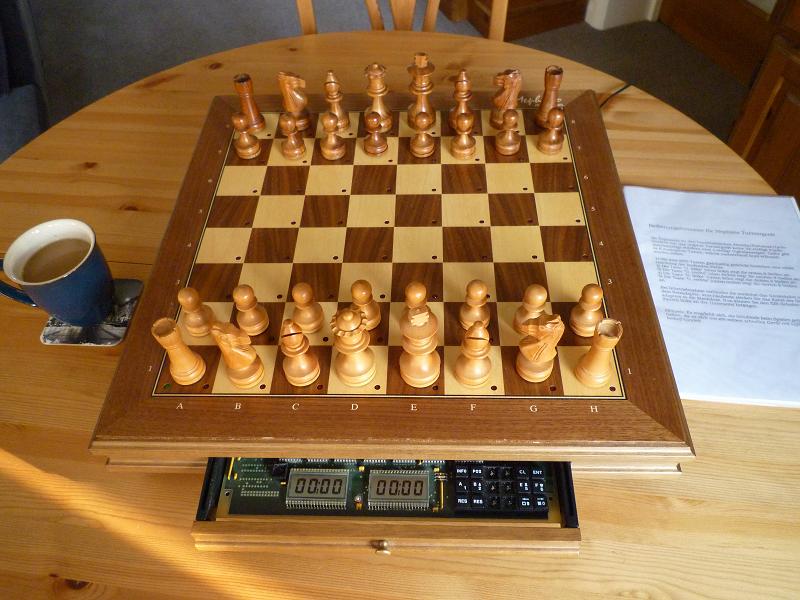|
From their beginning in 1980, the World Microcomputer Chess Championships were highly significant in influencing the public choice of which chess computer to buy. After Fidelity dominated the early scene the emergence of Richard Lang as the World’s number one programmer working for Mephisto put the two companies in direct competition for the top end of the market. An overwhelming victory for Mephisto at Amsterdam (1985) was followed by a hard fought win at Dallas(1986). Fidelity ducked the challenge in Rome (1987) but they threw everything they had at the next year’s competition in Almeria. It turned out to be a fight to the death.
There was a Manufacturers team competition, which was a straight contest between four Fidelitys and four Mephistos. Other manufacturers recognised the futility of entering. Also a “Commercial” competition which was supposed to be between machines actually available to the public. It turned out to a virtual match between a Fidelity 68020 only available to special order and a prototype 68020 Mephisto Turniermaschine, both running at 20MHz. The only other entry the Plymate program for Conchess machines scored half a point from ten games. Lastly, there was a Software group which included seven entries, but with Mephisto and Fidelity again slogging it out for supremacy, with the same programs and hardware.
For Fidelity, Dan & Kathe Spracklen had made considerable improvements to the strength of their program. The hardware was state of the art using 68030 processors (see photo below). Richard Lang for Mephisto completely rewrote his successful Roma program and the 68020 Turniermaschines were built to run the new Almeria program at the highest feasible clock speed 30 MHz. There turned out to be little between the contestants. Mephisto seemed to only gain an edge from their daily retuning of the programmable opening books. However by the end of the event Mephisto had a solid looking 34 - 24 advantage across the competition, and had won all three groups (see results below).
The far-reaching consequences of the Almeria result were not immediately obvious, and directly afterwards Sid Samole of Fidelity gave an upbeat interview to the Swedish Ply magazine. However it seems that moves were soon made behind the scenes to sell Fidelity’s business to Hegener + Glaser (Mephisto). The sale was completed in September 1989 but, even in victory, acquiring Fidelity turned out to be a disastrous mistake for Mephisto. By early 1994, weakened by losses from the Fidelity merger, Mephisto itself had been taken over by Saitek.
|
